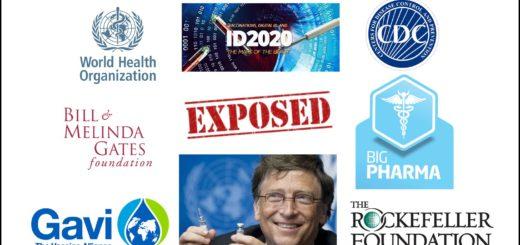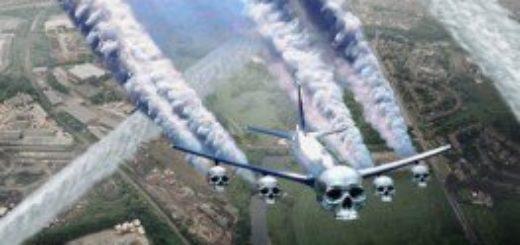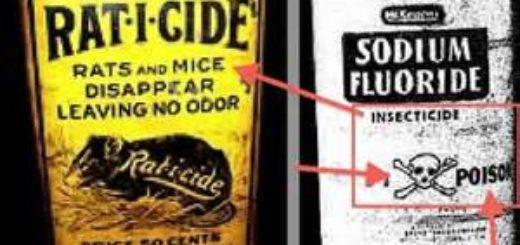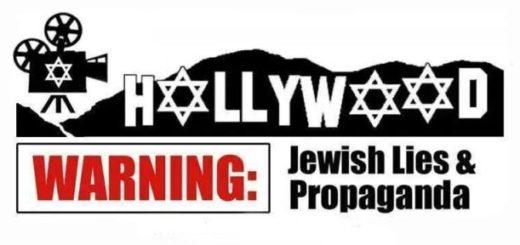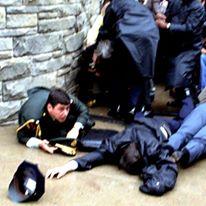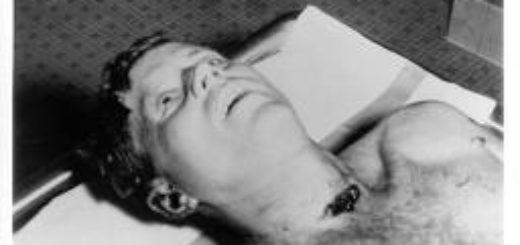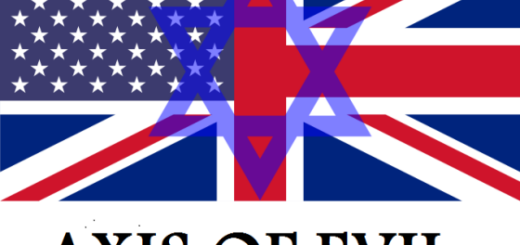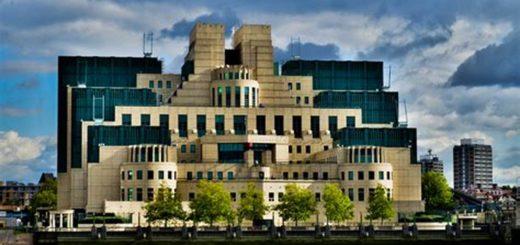Dope, Inc. is $600 Billion and Growing
Dope, Inc. Is $600 Billion and Growingby Jeffrey Steinberg[PDF version of this article] In the Summer of 1996, EIR conducted an exhaustive study of the worldwide illegal drug trade, “Britain’s Dope, Inc. Grows To A $521 Billion Business” (EIR, July 26, 1996). That study was, in part, provoked by an Autumn 1995 EIR profile of the “new international terrorism,” which highlighted the very Afghansi mujahideen and Ibero-American narco-terrorist organizations that have waged war against every nation-state on this planet for the past decade, culminating in the irregular warfare assaults of Sept. 11, 2001. What linked those two EIR reports was the fact that the global $1 trillion per year underground economy of guns and drugs represents the logistical heart of the new international terrorism. From the opium fields of Afghanistan to the coca plantations of Colombia, the legions of modern irregular warfare combatants, deployed top-down by factions of the Anglo-American oligarchy (with generous assistance from elements within the Israeli military and intelligence structures), survive or fall, on the strength of the “logistics in depth” of the underground economy of illegal weapons and drugs. To defeat international terrorism today, governments of the world, led by the United States and Russia, must undertake a no-holds-barred assault on the underground economy of illegal drugs and weapons—what EIR first labeled “Dope, Inc.” back in 1979. The black market in guns and drugs is the “Achilles’ heel” of the modern irregular warfare apparatus. Take out that infrastructure, and the capacity of this network to conduct their warfare is destabilized, decisively. This means, above all else, that the “Grasso Factor” can no longer be tolerated, if the world is to survive the drive for a global “clash of civilizations” aimed at spreading war and chaos across the entire Eurasian land-mass. The “Grasso Factor” refers to the infamous visit that the Chairman of the New York Stock Exchange, Richard Grasso, paid to the Colombian jungles, in June 1999, where he embraced a top leader of the Revolutionary Armed Forces of Colombia (FARC), Raúl Reyes, and pronounced one of the world’s leading narco-terrorists “a man Wall Street can do business with.” Since the Grasso visit, new damning evidence has surfaced about the FARC’s far-flung drug operations, including a multibillion-dollar-a-year guns-for-drugs alliance with the Mexican Arellano Félix drug cartel, the biggest and most murderous drug gang in that country. It is now an open secret that the major Wall Street and City of London commercial banks launder hundreds of billions of dollars in illegal drug money every year as a matter of policy. U.S. intelligence officials privately acknowledge that all of the major New York commercial banks have emissaries in Colombia, Peru, Paraguay, and the other targets of Dope, Inc., soliciting the narco-traffickers’ business. There is a fierce competition for narco-dollars—one of the biggest sources of cash flow in the world today, at a moment when the global financial system is on the verge of total collapse. The pace at which the global financial and irregular warfare crises are unfolding, did not permit the EIR team to undertake the same painstaking study of the present world illegal drug trade that we conducted in 1996. However, EIR editors have reviewed some of the critical data, and have interviewed senior anti-drug officials from the United States and several Ibero-American nations. The report that follows represents a highly accurate summary profile of the status of Dope, Inc. at the dawn of the new millennium. A ParadoxThe 1996 EIR study concluded that Dope, Inc. had grown to a $521 billion a year illegal business—nearly doubling from the $259 billion annual revenue of 1985. The recent EIR review of U.S. government data, including the “National Drug Threat Assessment 2001” report, produced in October 2000 by the National Drug Intelligence Center (NDIC), confirms that Dope, Inc. now represents an annual cash flow of well over $600 billion. This is an extremely conservative estimate. More precise figures, which we are not prepared to state at this time, are likely significantly higher. At the same time, it is important to report a significant, seemingly paradoxical phenomenon. According to the March 2000 “International Narcotics Control Strategy Report,” the annual State Department study of the world underground narcotics economy, both opium and coca production declined during 1995-99. The declines were very specific: Bolivia and Peru carried out intensive campaigns to eradicate coca production. Over that five-year period, Bolivian coca production fell by a staggering 71%, and Peru, under the Presidency of Alberto Fujimori, cut coca production by 62%. During the same time frame, as the FARC was supplanting the Medellín and Cali cartels as the country’s leading cocaine-trafficking organization, Colombia’s coca production shot up by 126%. Colombia also emerged as an opium-producing and heroin-processing country, which now provides a substantial portion of the high-grade heroin sold on the streets of North America. Colombian anti-narcotics officials who recently visited Washington reported, during a behind-closed-doors briefing, that the opium fields and heroin laboratories were established in Colombia, with the assistance of Afghani and Pakistani agricultural specialists and chemists, leading to suspicions about a possible narco-link between the FARC and Afghani and Pakistani drug lords, who, after 1996, had worked out a drug tax-for-protection arrangement with the Taliban. Afghan opium production increased between 1995 and 1999 by 34%, but at the same time, the government of Myanmar launched a successful crackdown against opium growers, reducing output by 53%. What is the significance of these opposing trends over the past half-decade? While overall drug production has been on the rise, countries that showed a determination to crack down on the production of cocaine and opium were not only successful, but their efforts reduced global production figures for cocaine and opium by 18% and 26%, respectively, from 1995 to 1999. So much for the drug legalizers’ arguments that Dope, Inc. is “too big” to defeat. A global, concerted effort, that may now be politically possible, in the wake of the Sept. 11 attacks, can succeed. The trillion-dollar question is: Will the Bush Administration, the Putin government in Russia, and allied governments in Europe and other parts of the world, at long last, launch the kind of coordinated effort that aims to win? Putin Takes a StandRussian President Putin called for precisely such an effort to wipe out the underground narcotics economy, as a means of defeating international terrorism. At the Sept. 28 session of the Russian Security Council, Putin described the “acute” drug abuse crisis in Russia. “This problem is extremely acute today, and not only in and of itself,” he told his top security aides. “It is directly connected with the success of the struggle against crime … and of course, it is very closely interwoven with topic number one in the world, the struggle against terrorism. The narco-business is one of the main sources of financing for terrorist groups and irregular military units.” He elaborated: “Terrorism and narcotics are absolutely kindred phenomena. They have common roots and a similar destructive force. Terrorism, like the drug trade, has a highly ramified international network, and is transnational…. This illegal business produces superprofits, and ‘dirty’ monies are spent for ‘dirty’ purposes.” He concluded: “We must put an effective barrier to all forms of penetration of narcotics into illegal circulation, destroy the infrastructure of the narco-networks, and eliminate demand…. Therefore our objective is to close off all channels for the proliferation of narcotics, both external and domestic…. An important subset of tasks has to do with eliminating the financial channels for the narco-business, which can be done not only by a fight against criminal elements, but also with an entire system of special measures. These include combatting the legalization of criminal incomes.” If the opportunity posed by the post-Sept. 11 Russian-American cooperation is lost, then the other side of the picture—the continuing overall growth of Dope, Inc.—will dominate and destroy. The Global PictureThe local success stories in Bolivia, Peru, and Myanmar hardly offset the fact that Dope, Inc. continued to grow, albeit at a slower pace, over the 1995-99 interval. EIR‘s comparative review of core data—the estimated volumes of production of cocaine, heroin, marijuana, and synthetic drugs; and the changes in retail prices and street-level purity (normally among the most accurate data assembled by national law enforcement agencies)—points to certain conclusions: First, the dramatic increase in production and use of marijuana and ever-more-sophisticated and addictive synthetic drugs, more than offset the decline in raw opium and coca production over the five-year period. This is confirmed by both statistical data assembled by the NDIC and the State Department, and by anecdotal reports, largely featured in the NDIC’s “Threat Assessment 2001.” In fact, even in the cases of heroin and cocaine, the NDIC study suggested that pre-existing stockpiles of previous-year production meant that retail use in the United States continued to increase, even as new production declined, as the result of the targetted efforts of Bolivia, Peru, and Myanmar. By the year 2000, the proceeds from the illegal drug trade had certainly passed $600 billion per annum, given the continuing growth trends in the United States, Central Europe, Russia, and in many of the producer-countries that, in the past, had been immune to large-scale drug abuse, because crops were largely exported to the industrialized countries. Among the findings of the NDIC was that cocaine use continued to grow after 1997, but at a slower rate; and heroin use stabilized after 1997, but after having doubled between 1993 and 1997. Additionally, the spread of the “rave” culture has increased adolescent abuse of “designer” drugs, including combinations of heroin and MDMA. The NDIC warned, “The rave culture and the criminal activity that surrounds it pose a major threat to America’s youth.” In addition to the widespread presence of smokeable and inhalable heroin at rave concerts, the report warned of a big increase in heroin, MDMA, LSD, and boutique designer drugs on college campuses, “in visually appealing and easy to administer forms.” The reports also noted an explosion in the illegal manufacture and distribution of methamphetamines. In 1999 alone, more than 7,200 clandestine methamphetamine labs were shut down by police in the United States alone! Canada, since 1996, has emerged as a major supply point for precursor chemicals, required for the manufacture of methamphetamines. Overall, Canada has become a hub of drug abuse and of illegal drug flows into the United States. This may be called “the NAFTA effect,” as the North American Free Trade Agreement has opened the borders. While methamphetamine and “club drugs” like MDMA, ecstasy, and XTC were identified by the NDIC as the biggest expansion threats, marijuana abuse also continued to increase, with new and far more potent strains of the drug being produced in sophisticated indoor hydroponic “pot farms.” Canada, again, has become a major production center. There are no figures available from the U.S. government on domestic marijuana production, which makes any precise estimate of worldwide crop size or cash value impossible. In many U.S. states, marijuana remains the number-one cash crop. The second issue that the recent U.S. government drug surveys highlighted, was that the links between the illegal drugs and weapons economy and terrorism have become more and more evident. Whereas, in the past, the argument was often made, in official U.S. government publications, that the narco-terror links were tenuous and opportunistic, the 2001 NDIC study stated, bluntly, that “traffickers used laundered drug proceeds to … fund insurgency and terrorist organizations.” Indeed, while the case of the FARC in Colombia represents perhaps the most clear-cut example of the narco-terrorist phenomenon, other cases, with profound implications for Presidents Bush and Putin’s “war on terrorism,” can be found on every continent. In South and Central Asia, the Taliban case has already been cited. But in the heart of Europe, the ethnic Albanian Kosovo Liberation Army (KLA), with its offshoots operating inside Macedonia, has been exposed as one more narco-terrorist gang. One feature of the links between the KLA and the Egyptian Islamic Jihad (the core component of the so-called Osama bin Laden organization, al-Qaeda) is that the KLA smuggles Afghan heroin and hashish into Russia and Western and Central Europe. Money Laundering: Follow the Hedge FundsNewly elected U.S. Sen. Joe Corzine (D-N.J.) has recently emphasized that major money laundering can be carried out far more securely and efficiently through hedge funds, whose activities are subject to virtually no government scrutiny, than through the commercial banks. Corzine should know. Until his election to the U.S. Senate, he was chairman of the board of Goldman Sachs, one of the biggest Wall Street brokerage houses. With combined cash flows surpassing $1 trillion, Dope, Inc. requires enormous access to the global financial system, and its access is from the top down, as evidenced by the Grasso visit to the FARC jungle. A recent Senate Permanent Investigations Subcommittee study by the Democratic staffers, commissioned by Sen. Carl Levin (D-Mich.), revealed that the private banking units of most of the major New York commercial banks maintained a strict “see no evil” attitude toward their wealthy clientele. And the same banks engaged in the worst kinds of criminal collusion through their corresponding banking relationships with offshore British Commonwealth banks and branches, that operate totally outside the law. The pivotal role of international financial institutions in the laundering of drug money was underscored by a report released by the United Nations Office for Drug Control and Crime Prevention on May 29, 1998, titled “Financial Havens, Banking Secrecy, And Money-Laundering.” The authors were four leading experts on money laundering: Jack Blum, Michael Levi, R.T. Naylor, and Phil Williams. Blum is particularly well-known for his work as Special Counsel to the Senate Foreign Relations Committee’s Kerry Commission, which exposed the role of U.S. intelligence agencies in the 1980s in a global guns-for-drugs operation, associated with the Iran-Contra Affair and the Afghan mujahideen program, and which revealed the role of the Bank of Credit and Commerce International (BCCI) in laundering the proceeds of Golden Crescent opium and heroin trafficking to finance the war against the Soviet Army in Afghanistan. That 1998 United Nations report shed light on the role of offshore banks, the Euro-market, hedge funds, and other commodity traders, in laundering the proceeds of the underground economy of drugs and weapons, facilitating tax evasion, and other criminal activity. The study also endorsed the financial estimates, published two years earlier by EIR, to a great extent. The UN report estimated that, in 1997, the proceeds from illegal drug sales were more than $400 billion, and the total revenues of the criminal underground were above $1 trillion. The report identified four factors, as contributing to the vast expansion of drug-money laundering in recent years. First, the global black market has been dollarized. The report noted: “Although most illegal transactions at the retail level are conducted in the currency of the country where they occur, around the world there has been a steadily growing appetite for United States high-denomination bank notes as a vehicle for conducting covert wholesale transactions, for hiding international financial transfers, and for holding underground savings. This applies to the full spectrum of illicit and underground activity, but it also has direct implications for the proceeds of serious crimes, including drug trafficking. A foreign currency black market exchanging local currency for United States $100 bills is going to be equally accommodating to cigarette smugglers and tax evaders, dealers in banned wildlife, or traffickers in heroin. The more popular the use of the United States dollar, the more easily someone can bring United States currency to parallel money markets, convert it to local currency, deposit the local currency in a financial institution and wire it anywhere else, while attracting considerably less attention than the direct deposit of the United States currency would attract.” The report added that the dollars also are frequently used to purchase hard commodities, which are then resold, creating the impression that the narco-dollars are actually the proceeds of legitimate commerce. Dollarization, the report concluded, poses a grave challenge to international law enforcement and crime control. As of the writing of the UN study, $400 billion in United States currency notes were in circulation, with $300 billion of those dollars circulating outside the United States. This global circulation of U.S. currency is officially supported by the Federal Reserve Bank, which annually prints $16 billion in new currency, for shipment abroad—at a near 100% profit. So long as those bills never return to the United States, they constitute an interest-free loan with no terms of repayment. At the height of the growth of the Russian mafia during the Boris Yeltsin Presidency, the New York Federal Reserve Bank was shipping planeloads of $100 bills to mafia-run Russian banks on a daily basis. Second, the report highlighted the “trend towards financial deregulation” as a thorn in the side of efforts to stop drug-money laundering. The UN team emphasized that, domestically, deregulation has created the new phenomenon of “financial service supermarkets,” which provide their large clients with a full range of financial services, including banking, commodity brokerage, insurance, and fiduciary services, “along with departments skilled in creating foreign shell corporations and offshore trusts.” The report highlighted the tremendous growth of “private banking,” once the exclusive domain of a handful of Geneva banks that catered to very wealthy clients. Today, every major commercial bank in the industrialized sector competes for this high-profit business, and all standards of due diligence have been abandoned. The case of Citibank and its role in laundering drug money for Raúl Salinas, the brother of former Mexican President Carlos Salinas de Gortari, is but the most notorious of the recent cases of private banking, under deregulation, facilitating the laundering of drug money. In addition to the domestic implications of deregulation, the UN study highlighted the global dimensions, particularly the complete breakdown of exchange controls and currency controls. As the result of this, flight capital has become a source of grave instability, as highlighted in the 1997-98 hedge-fund assault on the “Asian Tiger” economies. To counter the devastating consequences of unbridled capital mobility, many countries have been forced to facilitate the inflow of drug money as a means of offsetting the losses. In a discussion in 2000 with this author, Blum observed that, while the Colombian economy has been in a state of collapse for years, Colombia is the one country in South America that has never gone to the International Monetary Fund for a bailout. Colombian governments have facilitated the repatriation of narco-profits, going so far as to contract out management of the national lottery to a company in a Caribbean hot-money haven. The third trend highlighted in the UN study was the expansion of the Euro-market, which coincided with the expansion of offshore banking centers that specialize in handling financial transactions of non-citizens. In these offshore banking centers, wealthy individuals hide their taxable earnings, multinational corporations dodge securities regulations by hiding their profits and dodging tax obligations, and criminals launder their profits. According to the UN report, these offshore banking centers house $5 trillion in assets: $1 trillion in bank deposits and $4 trillion in stocks, bonds, real estate, and commodities. The $1 trillion in annual revenues from the black market in narcotics, weapons, gold, diamonds, etc. is, thus, commingled with other money, much of which originates in the legal economy, further adding to the challenge posed to criminal investigators. So long as the system of globalization exists, the hot-money flows will make the task of shutting down drug-money laundering a most daunting challenge. The fourth trend noted by the UN report was the proliferation of offshore centers that offer the protection of bank secrecy. Another feature of globalization that the study identified was the growing role of “megabyte money” in the world economy, another factor that blurs the distinction between legitimate global commerce and the drugs-for-weapons trade. Today, most of the world cash flow is electronic, not the physical transfer of currency. The study noted: “The massive growth of electronic payments has been made possible by the development of the electronic transfer mechanisms operated by the Society for Worldwide Interbank Financial Telecommunications System (SWIFT), the Federal Reserve (Fedwire), and the Clearinghouse Interbank Payments System (CHIPS). The volume and value of the transactions that move through these mechanisms are staggering.” The UN study cited estimates of $2 trillion in daily electronic financial transfers by Fedwire and CHIPS alone, involving approximately 465,000 separate transactions. SWIFT conducts an estimated 220,000 transfer messages a day (dollar figures were not available). The U.S. Office of Technology Assessments, now defunct, estimated in 1997 that 0.05-0.1% of the daily transactions involve laundered funds, for a daily estimate of at least $300 million. Compared to the $2-3 trillion a day in total electronic movements of money, the $300 million is a small component, easily buried—unless the drugs-for-weapons trade is tackled in a top-down, comprehensive fashion. Regional drug cartels have established global alliances, to take full advantage of the offshore and related money-laundering facilities at their disposal. Russian crime money, in one intricate set of transactions, was recently traced to Israel, on to Antwerp, to Gibraltar, to Spain, eventually winding up in a London commercial real estate purchase. The Russian, Colombian, and Italian syndicates conduct joint operations. Poland has become a hub for drug-money and other criminal laundering. As of the time the UN study was published, Poland had a population of 39 million people—and 49 million bank accounts! Poland has become the Liechtenstein of Central Europe, with strong ties to the continent’s most notorious bank-secrecy havens. Furthermore, every major commercial bank in the world today has a branch in one or more of the offshore and bank-secrecy havens. Offshore banks have accounts at the big American, European, and Japanese commercial banks, enabling them to transfer funds from all of their clients to onshore banks, through corresponding relations that constitute one more big loophole in the system—encouraged from the top down. The UN report concluded with a ringing endorsement of the findings of the authors of EIR‘s Dope, Inc. more than 20 years ago: “The time has come to connect the dots. The common denominator in all of these problems is the enabling machinery that has been created in the financial havens. The effectiveness of these centers in helping people and companies hide assets is not the result of any single device. Changing bank-secrecy rules alone will not help. Rather, the centers have created a tool kit composed of new corporate instruments, foundations, trusts, trust companies, banks, and bank accounts. The tools are mixed and matched with jurisdictions that have made a point of non-cooperation with the rest of the international community in criminal and tax investigations. “What started as a business to service the needs of a privileged few has become an enormous hole in the international legal and fiscal system. It is estimated that there are now more than a million anonymous corporations. Consultants for the offshore banking centers say that the centers are home to more than $5,000 billion in assets…. “If the international community is to develop a rule of law to match the globalization of trade and the global movement of people, the issues raised by this hole will have to be addressed. The approach will have to be systemic.” |
||
 |
-
www.exopolitics.blogs.com/files/dope–inc….u.s….drug-trade-1978.pdf
It is with proper pride that we dedicate this book to the often- … Dope, Inc. was commissioned in September 1978 … with Britain’s dope-trading Keswick family in …


